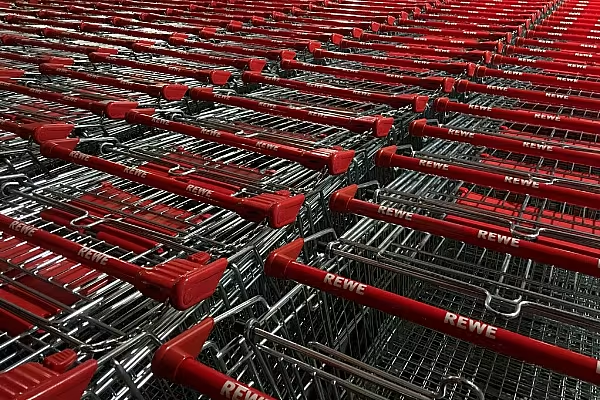The grocery industry continues to face numerous disruptions – rising supply chain costs, labour and raw material shortages, geopolitical conflicts, changes in consumer behaviour and expectations, and the ongoing cost-of-living crisis.
Grocery retailers today need to transform in order to navigate these disruptions and meet consumer demands. If managed well, current challenges can present new opportunities for grocery and consumer product companies to maintain profitability and meet consumer demands.
Lindsey Mazza, global retail lead at Capgemini, examines some of the trends that will shape the grocery industry in 2023 and how businesses can remain resilient and thrive in tough economic times.
1. Reduced Overall Spending
As the impact of rising costs becomes more apparent, consumer spending is set to reduce. Capgemini's 2023 Consumer Trends report found that almost half (44%) of consumers will reduce their overall spending in 2023, and 61% are concerned about their financial situation.
Food prices are at an all-time high due to global inflation and, according to the World Bank, are unlikely to stabilise until 2024. Capgemini's research showed that 64% of shoppers are opting for products from hypermarkets and discount stores and 65% prefer more affordable private-label or budget-friendly brands to meet these challenges.
When times are hard, consumers expect retailers to help them by offering every day, essential items at affordable prices, and this is also reflected in the report, with 67% of consumers saying that brands and retailers should offer lower prices for the products their families require.
2. Operational Transformation Will Be Key
Retailers will need to rethink their operational strategy to achieve cost reductions in a way that meets changing consumer expectations around experience, sustainability, and affordability. In addition to meeting consumer expectations, this will enable businesses to navigate key challenges such as increased energy costs and labour shortages.
Technology can be a key tool for transformation. By establishing intelligent demand planning and automated warehouse and fulfilment operations, companies can improve operational efficiency, preserve margins and reduce costs.
An integrated, AI-enabled supply chain can transform the function from a cost centre to one that boosts agility, improves scalability, and drives greater transparency within the organization. It can also provide insights that allow for more efficient management of resources that boost sustainability efforts.
When used effectively, technology enables businesses to offer affordable, or even discounted products, at a time when consumers need it most. This is something that will go a long way in terms of customer loyalty and providing a competitive edge to companies.
3. Putting Digital At The Heart
To compete and adapt in the face of continuous disruptions, digital will need to be prioritised so that it is at the core of operations. From long term planning to real-time fulfilment, tech-backed operations can help organisations become more agile, and adapt to customers’ needs quickly, a key differentiator.
Digital solutions enable organisations to tailor promotions to meet the needs and expectations of their customers, and also improve fulfilment options, such as kerbside pick-up and home delivery. Stores are empowered and able to create personalised customer touchpoints and develop newer, more sustainable business models that align with a brand’s purpose.
The benefits of digital are numerous, but, ultimately, it is a key factor in driving customer loyalty.
4. In-Store Experiences And Fulfilment Options
In-store shopping has increased in some supermarkets, but it’s clear that rapid delivery is increasingly important to the consumer experience.
According to Capgemini's 2023 Consumer Trends report, 43% of shoppers said that delivery and fulfilment are the most important service attributes when shopping for groceries. On average, consumers are willing to pay an additional 3.3% of the order value for a two-hour grocery delivery.
As a result, grocery stores will benefit from redirecting their efforts towards renovating their physical stores, and retailers will see value in investing in last mile delivery. By taking an innovative approach to the physical store, brands can offer memorable shopping experiences that will nurture consumer loyalty and help to create a unique brand identity that sets them apart.
5. Consumers Expect Improved Services
There is an interesting relationship between the perceived value that a brand offers, and the way in which consumers will interact with that brand. According to our research, 45% of consumers have ordered directly from brands, and 48% are willing to share personal data with them on how they use their products.
However, consumers are demanding better products and meaningful experiences in return. As we have seen, people are willing to pay for convenience, expert guidance and services that are tailored to them.
Read More: 10 Consumer Trends That Are Set To Shape 2023: FMCG Gurus
6. Seamless Omnichannel Experiences
Online shopping is not a new trend, however we are seeing greater ‘discovery’ through online channels. Our research found that 32% of consumers had found a new brand or product through social media, and this rose to 48% for Gen Z specifically. Retailers are therefore challenged to offer seamless, complementary in-store and online shopping experiences, rather than existing in silo.
Some 70% of consumers who purchase products through social media reported that they trust influencers' personal experiences and reviews. This presents a new opportunity for brands and retailers to connect with customers, unlock new sources of revenue, and seize growth opportunities.
Brands will likely divert their marketing budget to social channels to tap into this trend and unlock the potential of digital influencers to reach new markets.
7. Retailers Will Test Multiple Channels And Cross-Selling
When an organisation operates as both a business-to-business (B2B) provider and a business-to-consumer (B2C) retailer – the B2B2C business model – it can collect valuable customer data to inform its strategy of selling products through the most effective channels at the right moment.
The continued growth of online sales means the grocery industry will be looking at new and emerging channels such as social retail, shoppable livestreaming, or even the metaverse. As a result, we’ll see businesses increasing ad spend on their websites, apps, and creative in-store concepts in collaboration with brands to encourage cross-selling.
Read More: Top 5 Social Media Trends For Retailers And FMCG Brands In 2023
8. Connected Products Set To Continue Growing
Brands are increasingly connecting products and services to deliver a differentiated connected customer experience. Not only does this drive increased customer loyalty by helping to forge a more effective relationship with customers, it also creates new revenue streams.
Capgemini's research shows that around 43% of consumer product companies expect more than 20% of revenue to come from connected products and services.
9. Affordable Sustainability
Sustainability continues to be an important factor for consumers when deciding which retailer or brands to shop with, but as Capgemini's research shows, only 41% of consumers worldwide are willing to pay a premium for products they perceive to be sustainable. It’s imperative for brands and retailers to reassess their pricing strategies to provide consumers with sustainable options that are also affordable.
On this front, AI and other technologies can enable more accurate demand forecasting, leading to lower energy consumption, reduced waste, and lower labour costs.
Read More: Top Sustainable Food Trends For 2023
10. Leading With Purpose
Purpose driven organisations have a competitive advantage and can build more effective relationships with consumers. Companies that go beyond sustainability to focus on fair trade, social justice, and circularity tend to gain customer loyalty in the long term.
Capgemini is seeing greater interest from organisations in circularity and practices that move away from the ‘take-make-waste’ model. Successful companies focus not just on generating profits for their shareholders, but also recognise their responsibility to deliver value for all stakeholders – employees, local communities, or society in general.
Its research finds that seven in ten consumers want to adopt circular practices, and they are increasing their spending on companies that focus on recycling, reusing, and reducing waste.
It’s no surprise that grocers and retailers are expected to face numerous, far-reaching challenges in the year ahead. However, these consistent disruptions – at every stage of the value chain – present fresh opportunities for grocers to rethink, rework and reprioritise how they do business.
The grocery industry will need to transform its operational strategy to future-proof its businesses and pass on cost savings to customers, reaching target audiences through new channels and providing sustainable products at affordable prices.
It’s going to be a challenging year in grocery, but it has the potential to be a transformational one as well.
© 2023 European Supermarket Magazine – your source for the latest retail news. Article by Lindsey Mazza, global retail lead at Capgemini. Click subscribe to sign up to ESM: European Supermarket Magazine.














